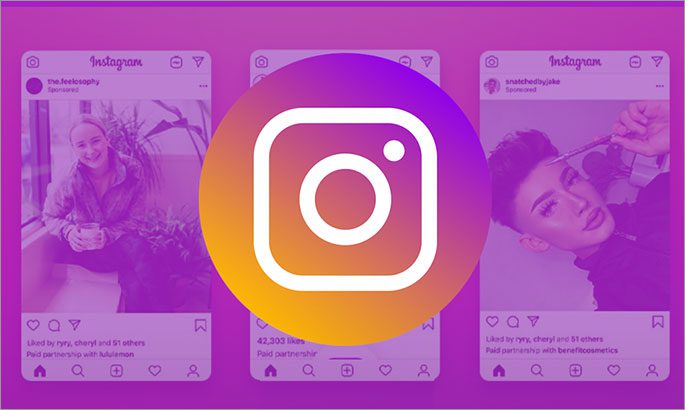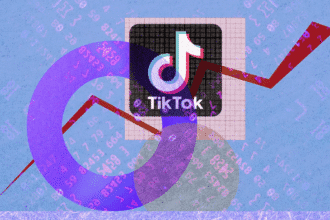Pinterest has long been known as the little sister to other social media giants. But little sister packs a big punch, and here’s why:
First off, it’s a search engine much like Google, only with pretty pictures. Content shared on the platform (in the form of “pins”) is indexed by Pinterest and Google. So with a little SEO work upfront, you can get your pins to rank.

The best part is, pins link directly to your website. The opportunity for traffic is huge.
Secondly, Pinterest users are shoppers. They use the platform to save resources they love and products they want to buy. They actually like discovering new brands and businesses. In fact, 87% of pinners have purchased a product because of Pinterest.
Read more: Does It Really Work if You Buy Pinterest Followers? – Influencive
As with any social media platform, Pinterest can be a moving target. Keeping up with all the changes can be difficult. Here are seven ways to create a Pinterest marketing strategy for 2019 and beyond:
1. Optimize personal boards
Boards are catalogs of pins based on themes and interests. They give pinners a way to organize the content they find so they can refer back to it later and share it with followers. If you cannot wait to increase your followers naturally, buying Pinterest followers is the thing for you.
Before you start pinning, create at least 10 personal boards relevant to your niche.
Ideally, you’ll have multiple boards for a given topic. For instance, if your niche is travel, you’d want a “broad” Travel board as well as more “specific” boards, eg. Travel on a Budget, Best Places to Visit in Europe, Travel Gear, Destination Vacations, and so on.
Nowadays, personal boards carry more weight than group boards (below). It’s important to optimize your personal boards so that Pinterest knows what keywords you want to be ranked for.
Follow these two steps for every new board:
- Include keywords in the board title and description
- Share ten indexed pins from others.
This way, Pinterest will index your own pins faster.
2. Leverage group boards
Anyone with a personal board can invite others to collaborate. When this happens, the board becomes a group board.
By participating in group boards with a large number of followers, you can reach pinners who may not be following you or seeing your pins in their feeds. If those new pinners love your content, they’ll likely share it on their personal and group boards to help you reach even more people. Many will start following you and clicking through to your website.
Pinterest has been cracking down on spammy groups, so make sure you only join active group boards. Otherwise, you may hurt your rankings instead of helping them.
Steer clear of boards that practice “one-way” sharing, meaning that contributors share into the group without sharing back out of it.
Pinterest wants you to share high-quality pins with high-quality boards and will reward you for it by showing ALL of your pins higher in the feed. But when you share low-quality pins with low-quality boards, it will squash your pins. So be careful.
3. Join tribes
Tribes are similar to groups, with “share-for-share” accountability measured in. If you share a pin with the tribe, you have to share a tribe from the pin. In some tribes, the ratio is 1:2 or even 1:3.
Tribes aren’t fail-proof, though.
For them to be effective, you need to join active tribes that are relevant to your niche and interests. Your pins will likely get lost if the tribe topics are too broad. With niche-specific tribes, your pins stand a better chance of being reshared by other members.
Speaking of tribe members, you’re going to be sharing a lot of pins from the tribe. Make sure the tribe has pins you’d actually want in your feed.
Some tribe members will reshare pins to boards (personal and group) that have low engagement…simply because they don’t want to hog up their feed with other people’s content.
This is spammy and won’t help your Pinterest SEO. Make sure you track tribe activity and performance.
Activity from spammy boards and tribes can break your traffic. You may want to learn more about Pinterest marketing strategies that are working right now with personal boards, group boards, and tribes.
4. Focus on repins, not followers
Don’t worry about your follower count on Pinterest. Engagement is more important than how many followers you have.
You want repins and clicks on your pins. Share content that helps pinners weigh their options, find new products, get new ideas, and make decisions.
Instead of sharing promotional pins that look like ads, share helpful tips and blog posts. Drive Pinterest fans to your website, build your email list, and follow up with new subscribers to close the sale.
You can also boost your brand’s engagement rate with the help of a Pinterest video downloader. This tool will allow you to easily download images and videos to your Android or iOS device for free. If you don’t have time to create new images or videos and want to
download them ethically from Pinterest, then this tool comes in handy.
5. Pin consistently
The #1 way to get traffic from Pinterest is to pin consistently and frequently. Pinterest loves content creators who share fresh content.
If you’re grasping at straws to create your own content, start with a 20:80 ratio (20% your pins, 80% other people’s pins). Once you have a library of content, switch it to 80:20. Expert pinners share 100% of their pins, which is perfectly okay as long as they get engagement.
Just remember, doubling and tripling the number of pins you share (whether they’re yours or someone else’s) can have a huge impact on your engagement.
Here are some tips to help you pin consistently:
- Schedule your pins ahead of time with Tailwind. The SmartScheduler makes it easy to find and schedule pins so you always have something in your queue.
- Stagger your pins. Don’t burst out ten pins in a row and then disappear for a week. Pinterest wants you to be active on the platform and show up regularly, and so do pinners!
6. Create perfect images
According to Pinterest, pins that work the best are vertical, with an aspect ratio of 2:3 or 1:3.5.
How do you create the perfect pin image?
There are many design platforms to choose from, including Canva, Picmonkey, and Photoshop.
Which one you choose comes down to preference. Photoshop gives you more creativity and editing options but has a higher learning curve. Canva and PicMonkey are easier to use but have fewer options for cropping, layering, masking, special effects, and more.
If you don’t have a logo design yet, you can use the above tools to also create your business logo and pin them on Pinterest, too. This can help boost brand awareness as potential new consumers engage with your brand. Just make sure to stick to your logo and avoid changing it from time to time to establish consistency. So, whenever online users see your logo on Pinterest or any other social media platform or online resource, they know that it’s your brand they’re engaging with.
Your pin images should be relevant to your brand and your pin. Pinterest can “see” your pin and will display it according to what it sees.
Pins with text tend to get more repins and clicks than plain photo images, but that’s not a hard-and-fast rule. Test different pins to find out what style works best for your niche.
7. Use targeted keywords
Why are keywords important in your Pinterest campaign? You’ve probably heard about search engine optimization (SEO), which is a digital marketing metric that has something to do with search engine ranking. Well, as in the case of other web content, you need to optimize your pins to make them highly visible to online users. By doing so, you’ll get more repins and clicks, substantially increasing traffic.
Keywords are the name of the game on Pinterest. For starters, you want keywords in these places:
- Board titles
- Board descriptions
- Profile description
- Profile title
- Pins
- Blog post
Descriptions will be displayed on pin close-ups, not in the feed. But don’t worry! They’ll still be working for you behind the scenes. Keywords help Pinterest understand your content. When pinners search for important terms relevant to your niche, your profile, boards, and pins will show high up in the feed.
It helps to keep a spreadsheet of Pinterest keywords, just like you would with organic SEO. You probably share similar content over and over. With a spreadsheet, you won’t have to research keywords from scratch for every new pin.
When it comes to Pinterest keyword research, Guided Search is your best tool. Just start entering a search term, and Pinterest will auto-populate suggestions.
Key takeaways
Getting traffic from Pinterest isn’t rocket science. It will take time to implement the strategies listed here, but once you have a system down, you can get results in as little as one hour a week.
Pinterest is constantly working to improve the site. Make sure you stay up-to-date with the latest Pinterest strategies for 2019 so you can navigate the changes and get consistent website traffic all year round.
Remember to test new strategies to see what works best for your content and niche.








